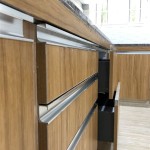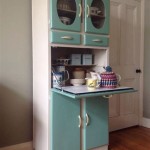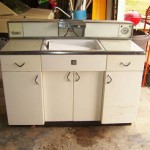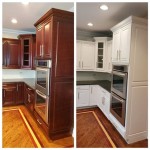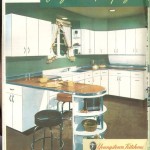What Paint To Use For Painting Kitchen Cabinets
Painting kitchen cabinets is a popular and cost-effective way to refresh the look of a kitchen without undertaking a full renovation. However, the success of this project hinges significantly on selecting the correct type of paint. Choosing the wrong paint can lead to chipping, peeling, poor adhesion, and a finish that simply doesn't hold up to the daily wear and tear expected in a kitchen environment. This necessitates a careful evaluation of the available paint options, their properties, and their suitability for kitchen cabinet applications.
The selection process involves considering factors such as the cabinet material (wood, laminate, metal), the desired sheen level (matte, satin, semi-gloss, gloss), the required durability, and the ease of application. Different paint formulations offer varying levels of resistance to moisture, grease, and cleaning agents, all of which are prevalent in kitchens. Understanding these nuances is crucial for achieving a long-lasting and aesthetically pleasing finish.
Understanding Paint Types: A Foundation for Selection
The paint market offers a variety of formulations, each possessing distinct characteristics. Two primary categories dominate the landscape: latex-based paints and oil-based paints. Within each category, further variations exist, including acrylic latex, alkyd enamel, and specialized cabinet paints.
Latex paints, also known as water-based paints, are favored for their ease of use, low odor, and quick drying time. They are generally more environmentally friendly than oil-based paints, containing lower levels of volatile organic compounds (VOCs). Acrylic latex paints, a specific type of latex paint, offer improved durability and adhesion compared to standard latex paints. These are a common choice for interior applications due to their flexibility and resistance to cracking. Latex paints clean up easily with soap and water, simplifying the painting process.
Oil-based paints, or alkyd paints, are known for their durable, hard finish and excellent leveling properties, which contribute to a smooth, professional-looking result. They offer superior resistance to scratches, stains, and chemicals compared to latex paints. However, oil-based paints have a longer drying time, a stronger odor, and require mineral spirits or paint thinner for cleanup. They also tend to yellow over time, particularly in areas exposed to sunlight. Due to environmental concerns and regulations regarding VOCs, oil-based paints are becoming less common and may be subject to restrictions in some areas.
Specialized cabinet paints are formulations specifically designed for use on kitchen cabinets and furniture. These paints often incorporate properties from both latex and oil-based paints, offering a balance of durability, ease of use, and a smooth finish. They typically have excellent adhesion to a variety of surfaces, including wood, laminate, and primed metal.
Key Considerations When Choosing Paint for Kitchen Cabinets
Several critical factors must be evaluated when selecting the appropriate paint for kitchen cabinet projects. These include the cabinet material, the desired level of durability, the desired sheen, the application method, and the preparation required.
Cabinet Material: The type of material making up the cabinets significantly influences paint selection. Solid wood cabinets generally accept most types of paint, but proper priming is crucial to ensure adhesion and prevent tannin bleed-through, especially with lighter paint colors. Laminate cabinets present a greater challenge due to their smooth, non-porous surface. A specialized primer designed for slick surfaces is essential to create a bond for the paint. Metal cabinets require a rust-inhibiting primer to prevent corrosion. Each substrate has unique bonding needs.
Durability: Kitchen cabinets are subjected to frequent use and exposure to moisture, grease, and cleaning products. Therefore, selecting a paint with excellent durability is paramount. Paints with a higher resin content tend to be more durable and resistant to chipping and scratching. Acrylic latex and alkyd enamel paints are known for their durability, as are specialized cabinet paints fortified with advanced polymers. Consider the daily wear and tear the cabinets will endure when determining the necessary level of durability. Paints with self-leveling technologies can provide an extremely smooth finish.
Sheen Level: The sheen level refers to the amount of light reflected by the painted surface. Different sheen levels offer varying degrees of durability and cleanability. Matte paint has a very low sheen, disguising imperfections but being more difficult to clean. Satin paint offers a low sheen with slight reflectivity, providing a balance between hiding imperfections and ease of cleaning. Semi-gloss paint has a moderate sheen, is more durable and easier to clean than satin, and is a popular choice for kitchen cabinets. Gloss paint has a high sheen, is the most durable and easiest to clean, but also highlights imperfections. The choice of sheen is largely a matter of personal preference, but semi-gloss or satin are generally recommended for kitchen cabinets due to their balance of aesthetics and practicality.
Application Method: The intended application method (brush, roller, or sprayer) can influence paint selection. While most paints can be applied using any of these methods, some formulations are better suited for specific techniques. Sprayers, for example, require paints with specific viscosity and flow characteristics. Using the right nozzle size and appropriate thinners is paramount for achieving the optimal finish. Brush application requires paints that level well to minimize brush strokes. Roller application benefits from paints that provide good coverage and minimal stippling. Understanding the properties of different paints and their compatibility with various application methods is essential for achieving professional results.
Preparation Required: Proper surface preparation is crucial for ensuring paint adhesion and a long-lasting finish, regardless of the paint type used. This includes cleaning the cabinets thoroughly with a degreasing cleaner to remove dirt, grease, and grime. Sanding the surface to create a slightly rough texture promotes better adhesion. Filling any holes or imperfections with wood filler or spackle ensures a smooth, even surface. Priming the cabinets with an appropriate primer seals the surface, blocks stains, and provides a uniform base for the paint. Failing to properly prepare the surface can lead to peeling, chipping, and an uneven finish. Investing time in thorough preparation is essential for achieving a professional-looking and durable paint job. Many professionals recommend a liquid deglosser as an alternative to sanding, especially for intricate cabinet styles.
Specific Paint Recommendations and Their Properties
Based on the considerations outlined above, several specific paint options are commonly recommended for kitchen cabinet applications. These include acrylic latex paints, alkyd enamel paints, and specialized cabinet paints.
Acrylic Latex Paints: High-quality acrylic latex paints offer a good balance of durability, ease of use, and affordability. Look for paints specifically formulated for cabinets or furniture, as these typically contain additives that enhance adhesion and resistance to chipping and scratching. These paints are generally easy to apply, clean up with soap and water, and have low VOC content. Brands like Benjamin Moore Advance and Sherwin-Williams Emerald Urethane Trim Enamel are often cited as top choices. The key is to choose a 100% acrylic formula for the best results. These paints often require a longer cure time to achieve full hardness.
Alkyd Enamel Paints: Alkyd enamel paints provide a hard, durable finish that is highly resistant to scratches, stains, and chemicals. While they offer excellent leveling properties and a smooth, professional-looking result, they have a longer drying time, a stronger odor, and require mineral spirits for cleanup. Due to environmental concerns and regulations, alkyd enamel paints are becoming less common and may be subject to restrictions in some areas. However, they remain a viable option for those seeking maximum durability and a classic, smooth finish. Oil-based paints provide superior blocking against stains and tannins compared to latex-based options.
Specialized Cabinet Paints: Several paint manufacturers offer specialized cabinet paints that are specifically formulated for use on kitchen cabinets and furniture. These paints often incorporate properties from both latex and oil-based paints, offering a balance of durability, ease of use, and a smooth finish. They typically have excellent adhesion to a variety of surfaces, including wood, laminate, and primed metal. These paints may be more expensive than standard latex or alkyd paints, but their superior performance and specialized formulation can justify the higher cost. Examples include INSL-X Cabinet Coat and General Finishes Milk Paint (which requires a topcoat for durability). These specialized paints often have self-leveling capabilities for a near-flawless finish.
Regardless of the specific paint chosen, it is crucial to use a high-quality primer that is compatible with both the cabinet material and the paint. The primer serves as a foundation for the paint, promoting adhesion, blocking stains, and creating a uniform surface. Selecting the right primer is as important as selecting the right paint.
Ultimately, the best paint for kitchen cabinets depends on a variety of factors, including the cabinet material, the desired level of durability and sheen, the application method, and the budget. By carefully considering these factors and researching the available paint options, it is possible to select a paint that will provide a long-lasting, beautiful, and functional finish for kitchen cabinets.

How To Prep And Paint Kitchen Cabinets Lowe S

How To Paint Kitchen Cabinets In 7 Simple Steps

How To Paint Kitchen Cabinets A Step By Guide Confessions Of Serial Do It Yourselfer

How To Paint Kitchen Cabinets In 7 Simple Steps

Ultimate Guide To Painting Cabinets Bbfrosch

Best Paint For Your Next Cabinet Project The Home Depot

Step By How To Paint Your Kitchen Cabinets

How To Paint Kitchen Cabinets Best Color Ideas Cost

Avoid These Mistakes How To Paint Cabinets That Are Already Painted Grace In My Space

The Average Diy Girl S Guide To Painting Cabinets
Related Posts

